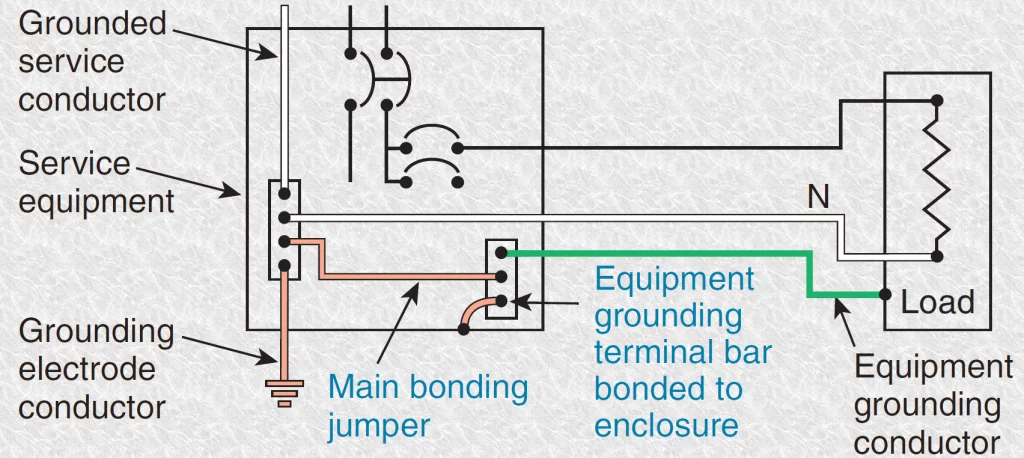Grounding and bonding are two completely different concepts covered in PEC Part 1 Article 2.50.
Grounding is the connection to the earth, while Bonding is the mechanical connection to an electrically conductive component to ensure electrical conductivity between metal parts. While these two systems often overlap each other, the component of the electrical system that needs to be able to carry fault current to the source must be substantial and capable of handling excessive amounts of current. This is called Effective Ground-Fault Current Path. The effective ground-fault current path needs a low-impedance fault current path to the source so the fault current could increase to a magnitude to quickly operate the overcurrent protective device. Since fault currents can be thousands of amperes, the effective ground-fault current path must be designed to safely handle those current levels.
Electrical power systems utilize system grounding to limit the voltage induced by lightning, line surges, or unintentional contact by higher-voltage lines and stabilize the system voltage-to-ground during normal operation. System grounding helps reduces the incidence of fires in buildings by minimizing the voltage stresses on electrical insulation ensuring a longer operating life of electrical equipment such as motors, transformers, and other system components. To limit the magnitude of voltage stresses, the grounding electrode conductors should not be any longer than necessary. Unnecessary bends and loops of grounding conductors should be avoided.
The primary purpose of equipment bonding is to ensure that the electrical continuity of an effective ground-fault current path is not compromised by an interruption in mechanical or electrical continuity. For example, conduits entering an open-bottom switchboard are usually not mechanically connected to the switchboard. Bonding jumpers provide electrical continuity. Equipment bonding are also used to connect the grounding terminal of a receptacle to a metal box that in turn is grounded via an equipment grounding conductor.
Other related articles:

